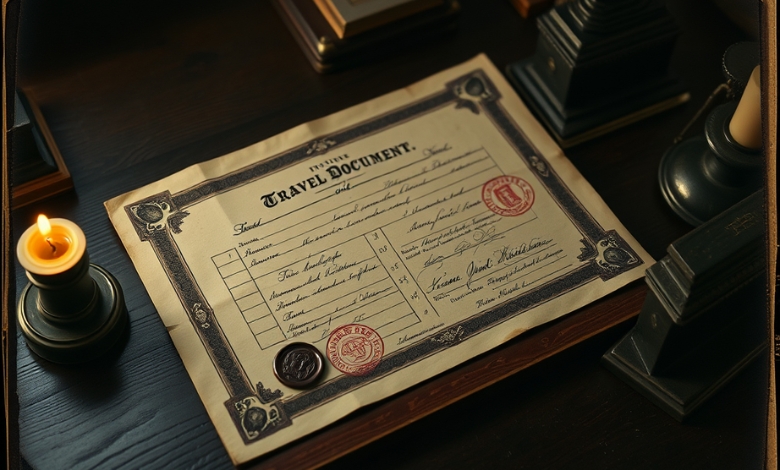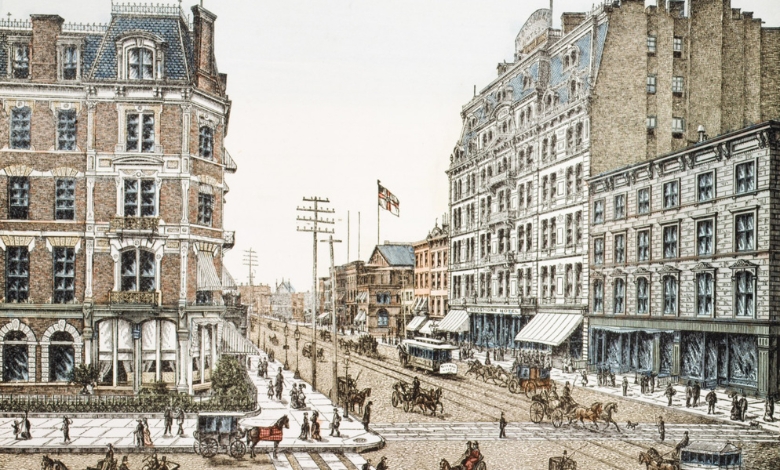Discover how long a passport lasted in the 1800s. From no expiration to trip-specific documents, explore 19th-century travel rules.
Ever wondered for how long passports in the 1800s lasted? Do ten years for a modern-day passport sound like a problem? Well, try having a new one for every trip, for a start. Or, alternatively, imagine having a passport with no date of expiry at all. Step into the unpredictable, inconstant world of 19th-century passports.
Back then, passports were a mixed bag. In one location, you could have been required to have one in order to travel between cities. In another, they were almost a relic of the past. And in case you happened to have been lucky (or unlucky), your passport could have been one that could have been kept forever. For those working abroad with travel documents during this time, the inconsistency of passport rules could either simplify or complicate their journeys significantly.
Let’s dive in and see how passports operated in the 1800s, why they lived such vastly different lifespans, and what they actually looked like. This trip through the ages will make you appreciate how much farther we have traveled, and even make you grateful for your modern-day travel headaches.
Article Breakdown
1. Passport Validity in the 19th Century: An International Perspective

In today’s age, passports are fairly uniform: most passports have a 5 to 10-year life span. In the 1800s, not so much, though. Let’s see how countries handled passports and for how long:
United States: Short-term Travel Documents
If you were an American in the 19th century, your passport, when you even bothered with one, most frequently was for two years’ duration. Unlike today, U.S. passports were not necessarily a requirement for international travel. In fact, during World War I, oftentimes you could get by with no one at all.
Europe: A Patchwork of Rules
European nations all had disorganized systems of their own. France, for example, eliminated passports for visiting abroad in 1861, but during Napoleonic times, you couldn’t even travel between towns without one. In contrast, in Britain, passports were seldom ever granted at all. Wherever passports were granted, in Britain, passports were for life, with no renewals ever!
Russia & Ottoman Empire: Heavy Hand
While Western European countries relaxed, both empires took a reverse path. Traveling was closely monitored, and passports became a necessity for moving about in one’s country, not to say abroad. Russian passports, for instance, only took six months to a year and had to be renewed periodically.
Did You Know? France under Napoleon required even citizens to carry an internal passport. No documents? No trip.
2. Why Did Passport Validity Vary So Much?
Why the inconsistency? Three main factors shaped passport validity in the 1800s:
1. Lack of Standardization
Unlike today, there was no global agreement on passport rules. Countries set their own laws based on local needs. Some, like Britain, saw passports as unnecessary. Others, like Russia, viewed them as vital for national security.
2. Changing Travel Needs
The 19th century was a period of massive transportation revolutions. The rise of steamships and railroads made travel faster and more accessible. Some countries loosened passport rules to encourage trade and tourism. Others clamped down to maintain control.
3. Political Climate
War, diplomacy, and shifting borders played a role. Countries at war were more likely to impose strict passport rules, while peaceful periods often saw relaxed regulations.
Imagine if each U.S. state had its own passport rules today. You’d need one document for California, another for New York, and a third for Texas. That’s what international travel felt like in the 1800s!
3. What Did 19th-Century Passports Look Like?
Forget about the sleek booklets we carry today, passports in the 1800s were single-sheet documents with handwritten details. They weren’t just identification; they were personal letters of introduction from governments.
Common Features of 19th-Century Passports:
- Handwritten text with the traveler’s name, age, and physical description.
- Signatures of government officials, sometimes even monarchs!
- Lack of photos (photography wasn’t widespread yet).
- Visa-style stamps for permission to enter other countries.
Interesting Fact: The British “passport” before the 1850s wasn’t even a document, it was a letter signed by the Foreign Secretary.
4. The Author’s Personal Journey with Passports
I still remember my first passport. The excitement of flipping through its crisp, untouched pages. The thrill of knowing it would soon be filled with stamps from adventures across the world. But imagine if that passport had no expiration date. Or worse, if I had to get a new one for every country I visited.
Writing this article made me realize how lucky we are today. Sure, renewing passports is a pain, but at least we’re not dealing with wildly inconsistent rules like travelers in the 1800s. We’ve come a long way from handwritten letters and wax-sealed documents.
5. The Turning Point: How World War I Changed Everything
So, what finally standardized passports? The answer: World War I.
Before the war, many European countries had relaxed or even abandoned passport requirements. But during the war, governments needed tighter controls on who could cross borders. As a result, the modern passport system was born.
Key Changes After WWI:
- Passports became mandatory for international travel.
- They started including photos to prevent forgery.
- Standardized expiration dates (usually 5 to 10 years).
Finally: A Passport Wasn’t What It Is Today
Looking back, it’s clear that passports in the 1800s were wildly inconsistent. Some lasted just a few months, while others had no expiration. Some were strict and required for every journey, while others were barely necessary.
Takeaways:
✅ The U.S. had 2-year passports, but they weren’t always needed.
✅ Britain issued indefinite passports, but only to a select few.
✅ Russia and the Ottoman Empire had strict passport control with frequent renewals.
✅ France abolished passports for travel in 1861, but used internal passports earlier.
✅ World War I led to modern passport standardization as we know it today.
So next time you grumble about renewing your passport, just remember, you could have been born in an era where passports barely existed, or worse, where you needed a new one every trip.
Bonus: Vintage Passport Gallery
- Charles Darwin’s Voyage on the HMS Beagle: Explore the letters and historical context of Charles Darwin’s legendary journey on the HMS Beagle, offering a glimpse into his travels and discoveries.
- Russian Internal Passport System: Learn about the internal passport system in 19th-century Russia, used to regulate movement and enforce residency rules within the empire.
- Peasant Migration and Internal Passports: An academic exploration of the internal passport system’s role during the abolition of serfdom and its impact on peasant migration in the Russian Empire.



